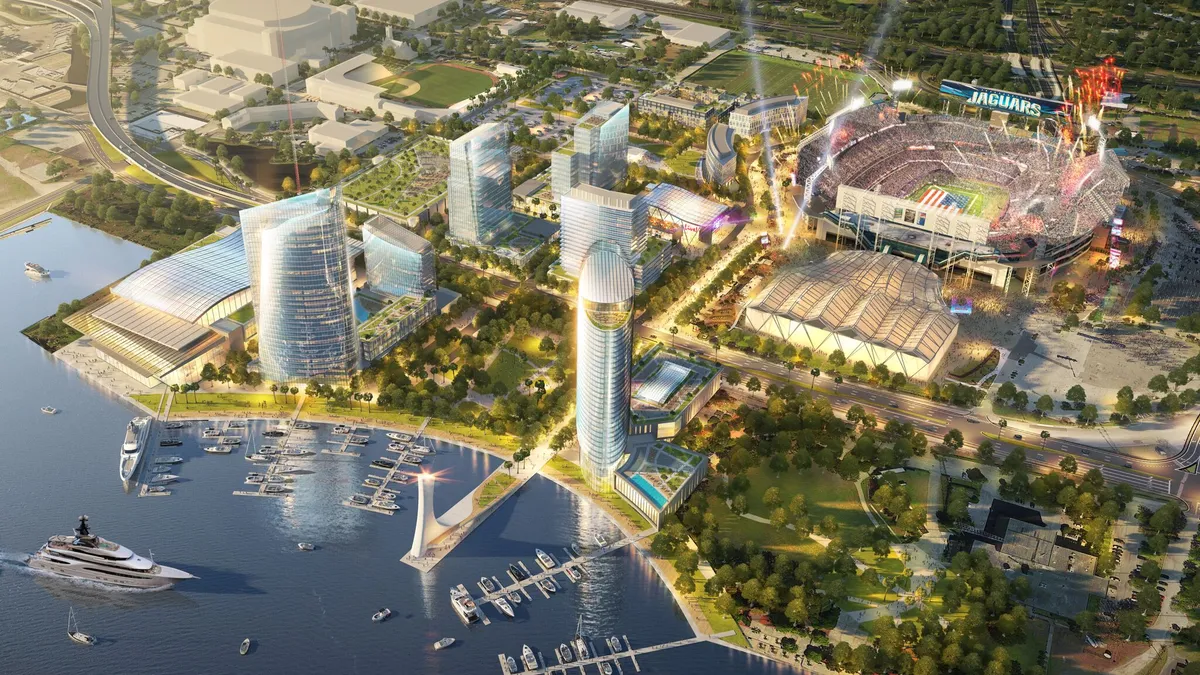Dive Brief:
- The Cordish Cos. has been tapped by the NFL's Jacksonville Jaguars to co-develop a $2.5 billion mixed-use district along with Iguana Investments at a site just outside the Florida team's EverBank Field, according to a team statement.
- The plan, which was rolled out at the Jaguars’ annual State of the Franchise event in April, encompasses 4.25 million square feet between the stadium and the St. Johns River. The walkable district will include clusters of high-rises with retail, office, hotel, convention, entertainment and residential space. A timeline for the project has not been announced, but Cordish reportedly told The Florida Times-Union that the full buildout could "take a generation."
- The site is a brownfield previously used by shipyards and oil tank farms that will require cleanup of petroleum-contaminated soil and approval from environmental regulators.
Dive Insight:
The Jaguars’ $2.5 billion mixed-use plan, along with the Oakland Raiders’ $1.8 billion stadium underway in Las Vegas, exemplify the scale of investments going into some projects related to sports venues across the country. Bloomberg reported last month that deals like the Raiders' signal an ongoing demand for sports-related development, and that tax-exempt bonds are a common financing mechanism for sports venue upgrades and new construction.
According to Bloomberg's analysis, the Raiders’ whopping $750 million public investment could persuade other franchises to pursue similar deals. However, some politicians have taken aim at public financing schemes for limiting government’s ability to meet other needs. Nevada state treasurer and gubernatorial candidate Dan Schwartz said this week that if he were elected governor in 2018, he would block infrastructure development around the Raiders stadium, unless the $750 million in public financing is reallocated to teacher salaries and education savings accounts.
Support from city officials has been positive in the early stages of the Jacksonville project, however, with Mayor Lenny Curry reportedly praising the project, according to the Florida Times-Union.
The city will likely be eager for the developers to take on work that will transform the previously contaminated site. City officials contained the pollution in the 1990s by paving over an underground clay wall, but to lay foundations, developers will need to dig up polluted ground under the oversight of environmental regulations. Work will need to be done on the site before construction begins to avoid the pitfalls of working on contaminated ground. Last month, Texas contractor PennaGroup said 30 of its workers felt ill while excavating a site that was previously an oil refinery storage tank area and that the cause was exposure to toxins.













